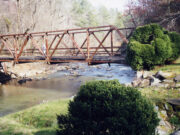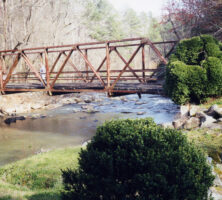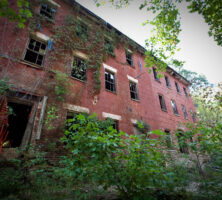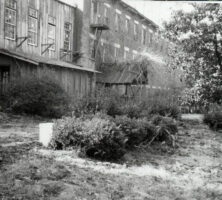Banning Mill is located in southeastern Carroll County on the banks of Snake Creek, an arm of the Chattahoochee River. When it closed in 1971, the mill, which opened in the decade of the 1840s, had been in existence longer than any other regional mill and had served as both employer and home to generations of area residents.
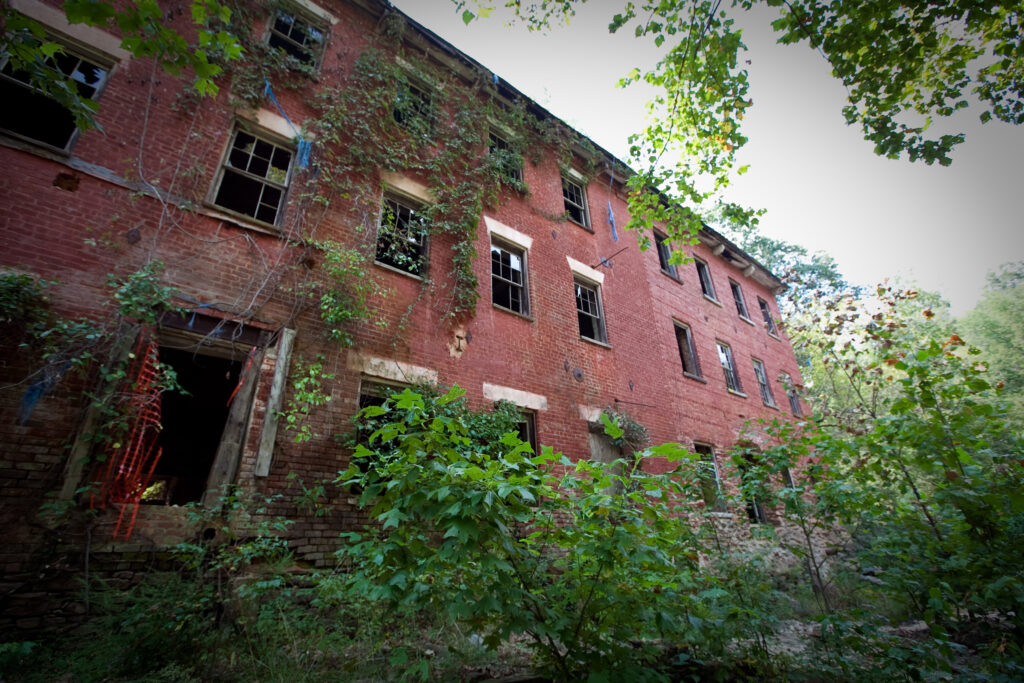
The four Bowen brothers first operated the mill on land that they acquired in one of Georgia’s land lotteries. By 1849 they were producing skeins of coarse yarn used in osnaburgs (grain sacks). The factory became known as Bowen’s Mill, and the surrounding area as Bowenville, with one of the brothers, William, serving as the community’s first postmaster.
After the mill burned in 1851, the Bowen brothers forfeited their business. The next owner was William Amis, a businessman and state legislator from Coweta County. The Civil War (1861-65) began before Amis was able to make the mill operational. The mill buildings survived the war, and in 1866 Amis reopened, naming the mill Carroll Manufacturing. By 1880 he had sold it to a group of four businessmen. One of the new owners, Arthur Hutcheson, took charge of the mill.
Hutcheson, an Irish-born merchant with a store in Palmetto, devoted the rest of his life to the mill community. Under his direction Hutcheson Manufacturing, as it was renamed, prospered. He added two new pulp mills, a sawmill, and a gristmill, in addition to refurbishing the area’s old paper mill. During Hutcheson’s time at Banning, the mill produced cotton sheeting and shirting fabric, while the paper mill produced striped paper, the first mill in the region to do so. Hutcheson’s greatest achievement, however, was bringing electricity to the mill in the late 1880s. Banning became one of the first factories in Georgia to operate with electric power.
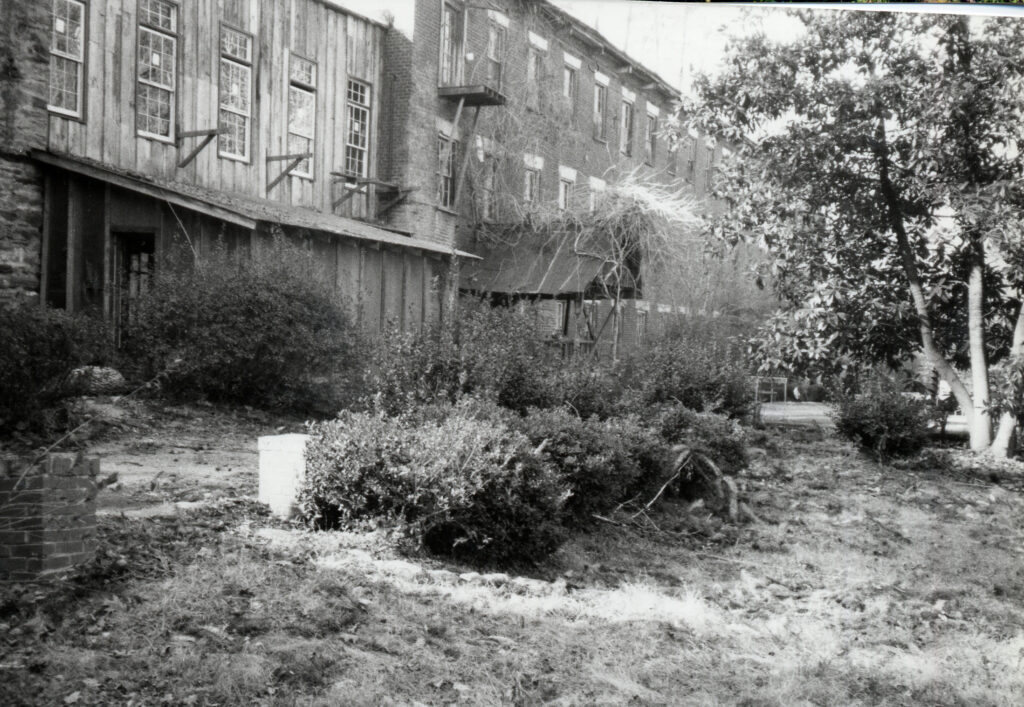
By Hutcheson’s death in 1895, the mill property extended for more than 1,300 acres. The textile mill housed 5,000 spindles and employed, in addition to the residents working in the surrounding mills, about 240 workers. Fewer than 1,000 people lived in the mill community, which was renamed Banning so that the post office would not confuse Bowenville with other similarly named area communities.
In 1921 the mill acquired new owners and another new name, Banning Cotton Mill. The new owners hoped for the prosperity of the Hutcheson years and updated the mill by adding a rubber plant facility. During the Great Depression of the 1930s, however, the mill experienced several closures. The residents of the area remained a close community but were often forced to seek work in other mills, and the owners declared bankruptcy by the close of the decade. During the 1940s Banning had several different owners, who initiated the production of heavy cord to be used in tire manufacturing and yarns to be used in mops. The mill closed down often during World War II (1941-45) and, when open, employed only fifty to seventy-five workers. One improvement to the facility during the war years was the installation of a motor to replace the water-powered turbine.
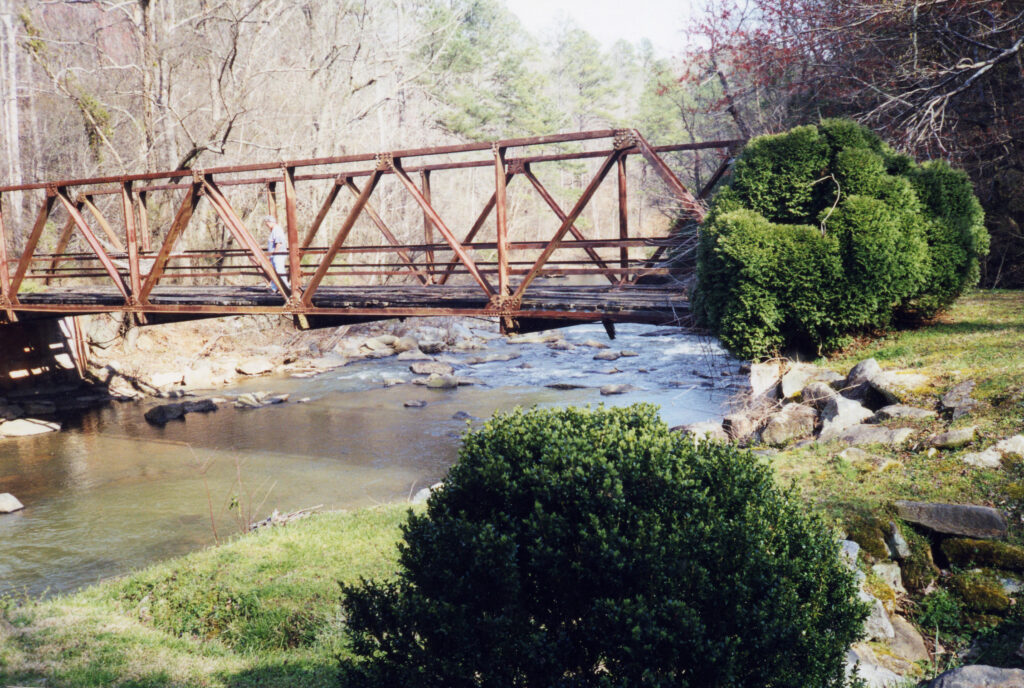
In an effort to revive the factory during the late 1950s, Banning manufactured carpet yarns and became affiliated with carpet manufacturers in Dalton. By the 1960s, without the capital to make required modern improvements, production at the mill began to decline and its operations ceased in 1971, approximately 130 years after its opening.
In August 1974 the mill opened as an entertainment center. The West Georgian reported one month prior that the venue would be the home of a private dinner club and two public theaters. The venue hosted musicians, visual artists, actors, and more throughout the following two decades.
In the early 1990s the property was purchased by Atlanta businesswoman Patricia Brown, with hopes to document its history with students at the University of West Georgia Public History Center. In 1998 Historic Banning Mills was founded to help preserve its history, as well as the surrounding Snake Creek River Gorge and Chattahoochee watershed. The conservancy now operates alongside an adventure resort and retreat center, offering experiential education, lodging, and outdoor activities and adventure-based programming.


